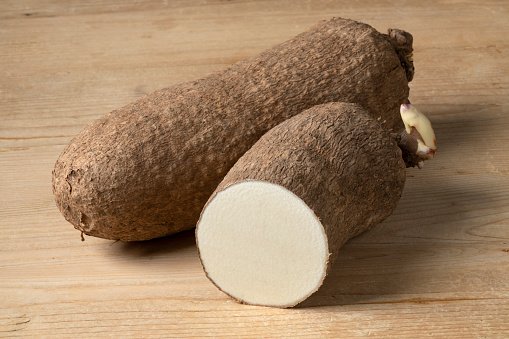Introduction.
If you’ve ever thought about starting a farm business in Nigeria, yam farming could be the perfect fit. Yam is one of Nigeria’s most important and widely consumed crops. It’s not only a staple food but also a major source of income for many farmers across the country.
So, if you’ve been thinking about turning your passion for agriculture into a thriving business, yam farming might just be the way to go.
In this guide, I’ll walk you through everything you need to know to get your yam farm up and running.
I’ll explain why yam farming is a great business choice, the steps to start, how to manage your farm, and what you can do to increase your chances of success.
Along the way, I’ll share some tips, important facts, and insights that can help you avoid common mistakes.
Yam farming isn’t just about planting yams and waiting for them to grow. There’s a lot more to it, including selecting the right land, preparing the soil, managing pests, and understanding the market for your product.
If you’re serious about making yam farming a business that works for you, you’ll want to take a detailed, thoughtful approach. Let’s dive into how you can get started.
Why Yam Farming?
Before jumping into the how-to’s, it’s important to understand why yam farming is such a big deal in Nigeria. First off, yam is one of the most significant crops grown in the country.
According to the Food and Agriculture Organization (FAO), Nigeria is the largest producer of yams in the world, accounting for over 60% of global production. That’s huge!
Yams are a vital food source, especially in rural areas. They’re also a great source of income because there’s a strong demand for them both locally and internationally.
Nigeria exports yam to countries like the United Kingdom, the United States, and other parts of Africa. The growing global demand for yams creates a great opportunity for you to tap into the market.
On top of that, yam farming can be quite profitable when done right.
The cost of starting a yam farm isn’t as high as some other types of farming, and the potential for profit is pretty solid, especially if you take care to manage your crops well.
How Do I Start a Yam Farm?
1. Choosing the Right Land
The first thing you’ll need to think about is where you’re going to plant your yams. The ideal land for yam farming should be well-drained, fertile, and not too waterlogged.
Yams grow best in loamy soil, which is a mix of sand, silt, and clay. It’s also important that your land has access to enough sunlight. Yams need plenty of sunlight to grow properly.
The size of the land will depend on how big you want your farm to be, but even a small plot of land can yield a decent harvest.
In Nigeria, yam farms can range from just a few acres to larger commercial farms. If you’re just starting out, it’s okay to begin small and scale up as you gain more experience.
2. Preparing the Soil
Yams need healthy soil to grow, so soil preparation is a crucial step. Before planting, clear the land of weeds, rocks, and other debris.
Then, plough the soil to loosen it up and make it easy for the yam tubers to grow. You may also need to apply organic manure or compost to enrich the soil and improve its fertility.
3. Choosing the Right Yam Varieties
Yams come in different varieties, so you’ll need to decide which one is best suited for your farm. In Nigeria, the most popular varieties of yam are:
- White Yam (Dioscorea rotundata): This is the most common type of yam in Nigeria and is highly demanded.
- Yellow Yam (Dioscorea cayenensis): This variety is also popular and has a distinct yellow color.
- Water Yam (Dioscorea alata): Known for its high water content, this variety is grown in wetter conditions.
You’ll need to choose the variety that works best for your soil, climate, and market demand.
4. Planting the Yams
Once the land is ready, it’s time to plant the yam seeds. Yams are grown from pieces of mature yam tubers known as “seed yams.” Each seed yam is cut into pieces, and each piece should have at least one “eye” (the part where the shoot will sprout). These pieces are then planted in rows, with the eyes facing upwards.
Planting yams requires a lot of attention to detail. You’ll need to plant them at the right depth, spacing them around 1 meter apart to allow enough space for the yams to grow.
The best planting season for yam in Nigeria is usually at the beginning of the rainy season, around March or April, as this gives the plants the best chance to thrive.
5. Watering and Fertilizing
Yams need water, but they don’t like being soaked in it. It’s important to ensure the soil is consistently moist, especially during the dry season. Water the yams early in the morning or late in the evening to prevent excess evaporation.
Fertilizing is also important. You can use both organic and inorganic fertilizers to give your yam plants the nutrients they need.
Apply fertilizer in the early stages of growth, and again a few months later to help the plants grow healthy and strong.
6. Managing Pests and Diseases
Just like any other crop, yams are susceptible to pests and diseases. Common pests include aphids, yam beetles, and caterpillars, while diseases like yam mosaic virus can affect the plants.
It’s essential to monitor your crops regularly and take action if you spot any signs of pests or disease. Organic pest control methods like neem oil or insecticidal soap can help, or you can consult an expert to choose the best treatment.
7. Harvesting the Yams
Yams are usually ready for harvest about 8 to 12 months after planting, depending on the variety. Harvesting should be done carefully to avoid damaging the tubers. It’s best to harvest yams when the vines start to dry up, as this indicates that the yams are fully mature.
To harvest, use a spade or hoe to gently dig around the yam tubers. Be careful not to puncture them, as this can lead to spoilage.
8. Marketing and Selling Your Yams
Once you’ve harvested your yams, you’ll need to sell them. The demand for yams in Nigeria is high, so you’ll have no problem finding buyers. You can sell your yams at local markets, supply them to food processors, or even export them.
To get a better price, you might want to consider packing and branding your yams, especially if you plan to sell in international markets. Exporting yams is a great way to tap into the growing global demand for Nigerian yams.
9. Budgeting and Financial Management
Running a successful yam farm requires good financial management. It’s important to keep track of all your expenses, including the cost of land preparation, seeds, fertilizers, and labor.
You’ll also need to monitor your sales and profits so you can make informed decisions about expanding your farm.
It might take some time before you see a significant profit, but once your farm is established, the returns can be substantial. Make sure to plan your finances carefully and seek advice if needed.
FAQs
1. How much capital do I need to start a yam farm?
The cost of starting a yam farm depends on the size of the farm. For a small-scale farm, you can start with a few hundred thousand Naira, which covers land, seeds, and basic farm tools. Larger farms will require more investment, but the potential for returns is also higher.
2. What is the best season for planting yams in Nigeria?
The best time to plant yams is at the beginning of the rainy season, typically around March to April. This allows the yams to benefit from consistent rainfall.
3. Can I start a yam farm with just a small plot of land?
Yes, you can start a small yam farm on a few acres or even less. As you gain experience and see success, you can expand your farm.
4. How long does it take for yams to grow?
Yams typically take 8 to 12 months to reach full maturity, depending on the variety and the growing conditions.
Conclusion
Starting a yam farm business in Nigeria can be an exciting and profitable venture. With the right land, knowledge, and management, you can turn yam farming into a sustainable business that provides both food and income.
By following the steps outlined in this guide, you’ll be well on your way to becoming a successful yam farmer.
So, are you ready to start your own yam farm? What’s the first step you’re going to take today?





GIPHY App Key not set. Please check settings